
Honoré de Balzac was a French novelist and playwright. The novel sequence La Comédie humaine, which presents a panorama of post-Napoleonic French life, is generally viewed as his magnum opus.

Charles-François du Périer Dumouriez was a French military officer, minister of Foreign Affairs, minister of War in a Girondin cabinet and army general during the French Revolutionary War. Dumouriez is one of the names inscribed under the Arc de Triomphe, on Column 3.

Jacques Pierre Brissot, also known as Brissot de Warville, was a French journalist, abolitionist, and revolutionary leading the faction of Girondins at the National Convention in Paris. The Girondins favored exporting the revolution and opposed a concentration of power in Paris. He collaborated on the Mercure de France and the Courier de l'Europe, which sympathized with the insurgents in the American colonies.
The Girondins, or Girondists, were a political group during the French Revolution. From 1791 to 1793, the Girondins were active in the Legislative Assembly and the National Convention. Together with the Montagnards, they initially were part of the Jacobin movement. They campaigned for the end of the monarchy, but then resisted the spiraling momentum of the Revolution, which caused a conflict with the more radical Montagnards. They dominated the movement until their fall in the insurrection of 31 May – 2 June 1793, which resulted in the domination of the Montagnards and the purge and eventual mass execution of the Girondins. This event is considered to mark the beginning of the Reign of Terror.

Yvonne Printemps was a French singer and actress who achieved stardom on stage and screen in France and internationally.

The Tomb of Ligeia is a 1964 American-British horror film directed by Roger Corman. Starring Vincent Price and Elizabeth Shepherd, it tells of a man haunted by the spirit of his dead wife and her effect on his second marriage. The screenplay by Robert Towne was based upon the short story "Ligeia" by American author Edgar Allan Poe and was the last in his series of films loosely based on the works of Poe. Tomb of Ligeia was filmed at Castle Acre Priory and other locations with a mostly British cast.

Marco Pierre White is a British chef, restaurateur, and television personality. In 1995, he became the youngest chef to be awarded three Michelin stars. He has trained chefs including Mario Batali, Shannon Bennett, Gordon Ramsay, Curtis Stone, Phil Howard and Stephen Terry. He has been dubbed "the first celebrity chef" and the enfant terrible of the UK restaurant scene.

History Is Made at Night is a 1937 American romantic comedy drama film directed by Frank Borzage and starring Jean Arthur, Charles Boyer, and Colin Clive. It was distributed by United Artists. Its plot follows a woman who falls in love with a Parisian maître d' who saves her from a set-up her possessive ship magnate husband has hatched to keep her under his control.
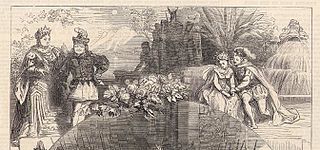
The Palace of Truth is a three-act blank verse "Fairy Comedy" by W. S. Gilbert first produced at the Haymarket Theatre in London on 19 November 1870, adapted in significant part from Madame de Genlis's fairy story, Le Palais de Vérite. The play ran for approximately 140 performances and then toured the British provinces and enjoyed various revivals even well into the 20th century. There was also a New York production in 1910.

Denys de La Patellière was a French film director and scriptwriter. He also directed Television series.

The Trail of the Octopus is a 1919 American mystery film serial directed by Duke Worne. A print of The Trail of the Octopus which is missing episode 9 is in the Library of Congress. The surviving film serial has been released on DVD.
Le Voyageur sans bagage is a 1937 play in five scenes by Jean Anouilh. Incidental music for the original production was written by Darius Milhaud and for the play's first Paris revivals by Francis Poulenc.
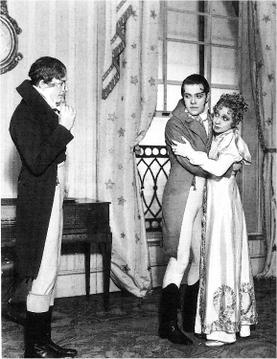
Conversation Piece, billed as "A Romantic Comedy with Music", is a musical written by Noël Coward. It premiered at His Majesty's Theatre, London, on 16 February 1934, and ran for 177 performances over five months. A Broadway production opened at the 44th Street Theatre later that year but ran for only 55 performances.
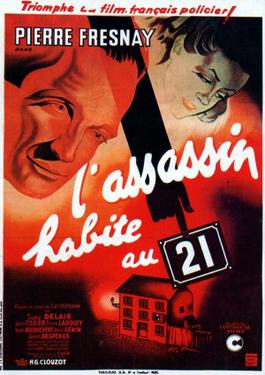
The Murderer Lives at Number 21 is a 1942 French comedy thriller film by director Henri-Georges Clouzot. Adapted by Belgian writer Stanislas-André Steeman and Clouzot from Steeman's 1939 book of the same title, it was Clouzot's debut feature film as a director. The film is about the hunt by detective Wens for the murderer Monsieur Durand, who leaves calling cards and manages to be everywhere at once. With the aspiring singer Mila Malou, Wens follows clues to a seedy boarding house where he hopes to find the murderer.
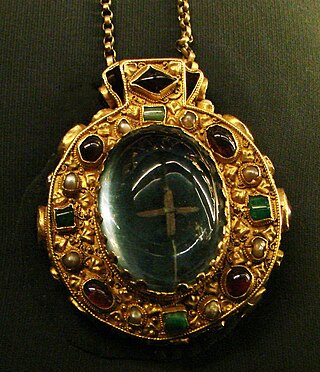
A talisman is any object ascribed with religious or magical powers intended to protect, heal, or harm individuals for whom they are made. Talismans are often portable objects carried on someone in a variety of ways, but can also be installed permanently in architecture. Talismans are closely linked with amulets, fulfilling many of the same roles, but a key difference is in their functions. An amulet protects a person or possession against evil forces while a talisman provides good fortune.
Marie du Fresnay, or Maria du Fresnay, née Daminois (1809–1892), was a French writer.

Ballet of the Nuns is the first ballet blanc and the first romantic ballet. It is an episode in Act 3 of Giacomo Meyerbeer's grand opera, Robert le diable. It was first performed in November 1831 at the Paris Opéra. The choreography was created by Filippo Taglioni. Jean Coralli may have choreographed the entry of the nuns.

Traveling Light is a 1944 French drama film directed by Jean Anouilh, starring Pierre Fresnay and Blanchette Brunoy.

The 8th Night is a 2021 South Korean mystery-thriller film directed by Kim Tae-hyoung for Gom Pictures starring Lee Sung-min, Park Hae-joon, Kim Yoo-jung, and Nam Da-reum. The film depicts the struggle of a former exorcist attempting to stop the resurrection of two mysterious beings who tormented humans and were locked up in separate caskets for 2500 years. It was released on Netflix and made available for streaming in 190 countries on 2 July 2021.
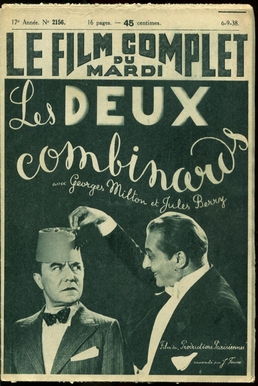
The Two Schemers is a 1938 French comedy film directed by Jacques Houssin and starring Georges Milton, Jules Berry and Josseline Gaël. The film's sets were designed by the art director Robert-Jules Garnier.

















